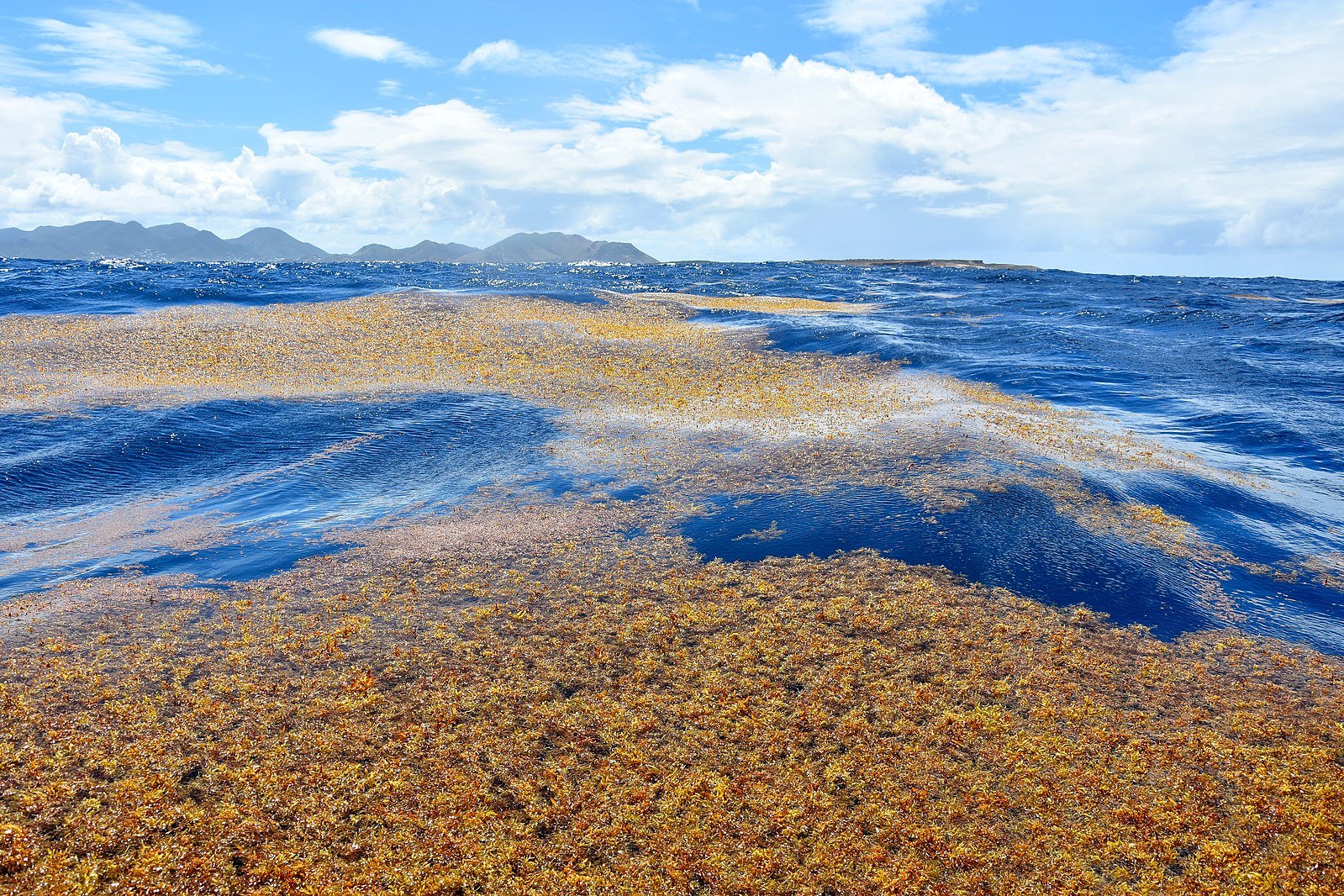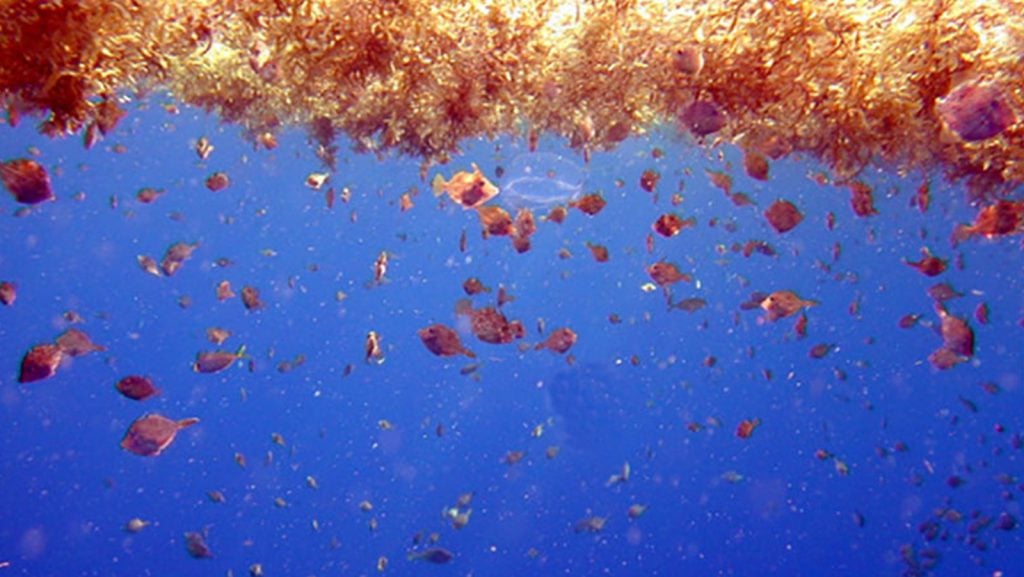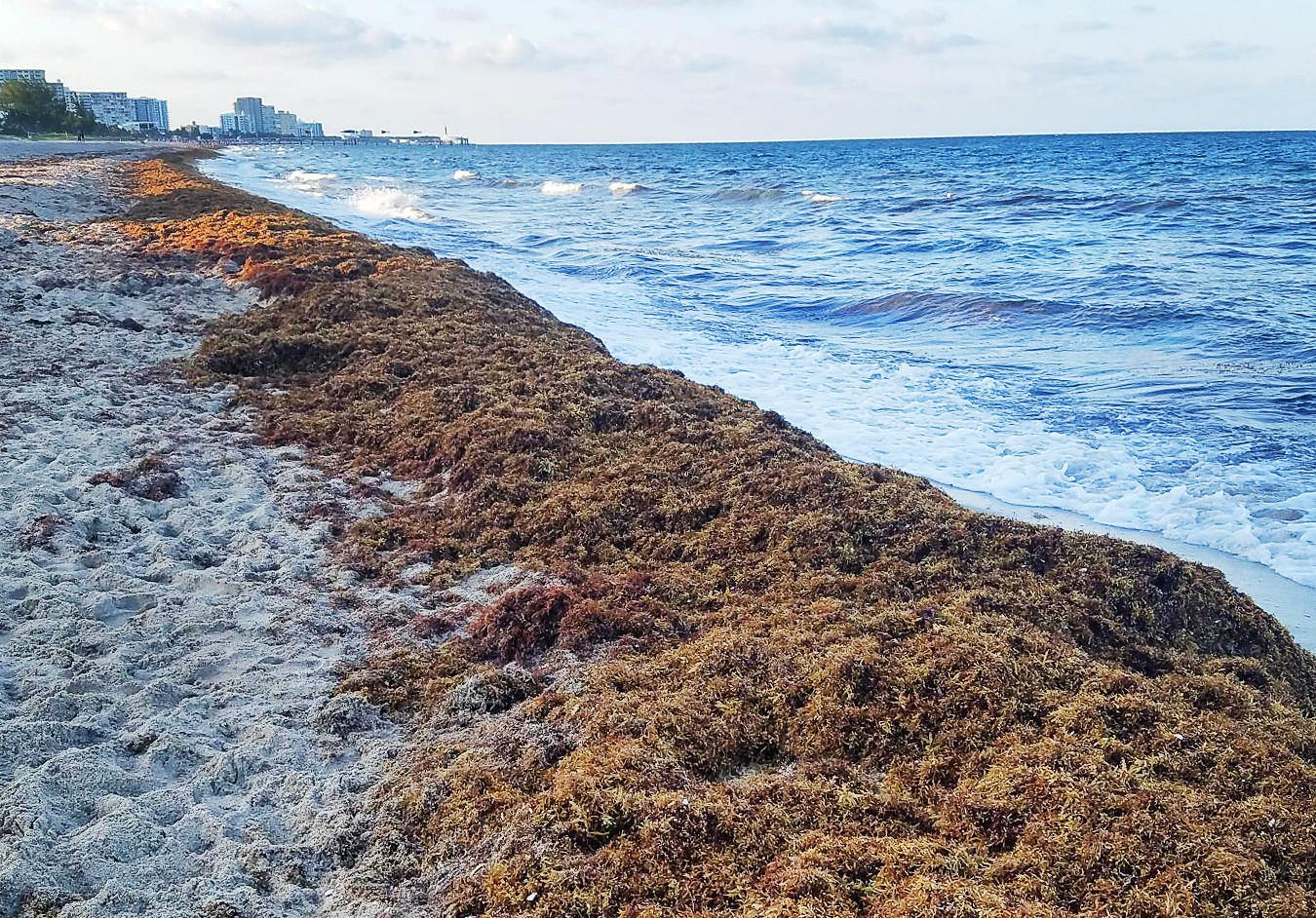
A giant mass of brown seaweed called Sargassum is heading toward North America. Experts estimate it is over 5,500 miles (8,851 km) long and weighs around 10 million tons. The seaweed is expected to wash ashore on beaches in the Caribbean and Florida in late spring or early summer of 2023.
The Great Atlantic Sargassum Belt, as it is known, is not new to the Atlantic Ocean. However, since 2011, the seaweed blooms are becoming noticeably larger. The belt is not a single giant lump but rather a collection of chunks. Some are small, while others stretch out for hundreds of miles.
Scientists aren't sure why the blooms are increasing in size. They suspect that runoff from farm fertilizers in major rivers like the Mississippi and the Amazon may be feeding the seaweed. Warmer ocean temperatures caused by climate change may also be a contributor.

Sargassum is an integral part of the ocean's ecosystem. The floating habitat provides food and protection for fishes, marine mammals, crustaceans, and even endangered loggerhead sea turtles. Sea birds use it as a place to rest and feed. Heavy patches of the algae also absorb carbon dioxide from the ocean.
However, the seaweed is a nuisance when it washes ashore, especially in large quantities. The rotting biomass releases hydrogen sulfide. The toxic gas, which smells like rotten eggs, can cause irritation to the eyes. It is also unsafe for those with breathing issues. The seaweed's presence can severely impact the economy of coastal areas that depend on tourism. The stringy algae also get tangled in fishing lines and nets, clog waterways, and smother coral reefs.

Removing Sargassum from the beaches is an expensive and time-consuming endeavor. Also, disposal of the collected seaweed can be tricky since it contains heavy metals that can be toxic to humans and animals.
Scientists are trying to come up with ways to address the issue. The ideas range from sinking the algae deep into the ocean to using it for building materials. Some experts believe the best solution is to keep the biomass from reaching the shore. However, the blobs are pushed around by ocean currents and the wind. Hence, predicting when, or if, they will come onto land is challenging. Hopefully, researchers will be able to come up with a feasible way to tackle the problem soon.
Resources: CNN.com, NPR.com, Smithsonianmag.com
